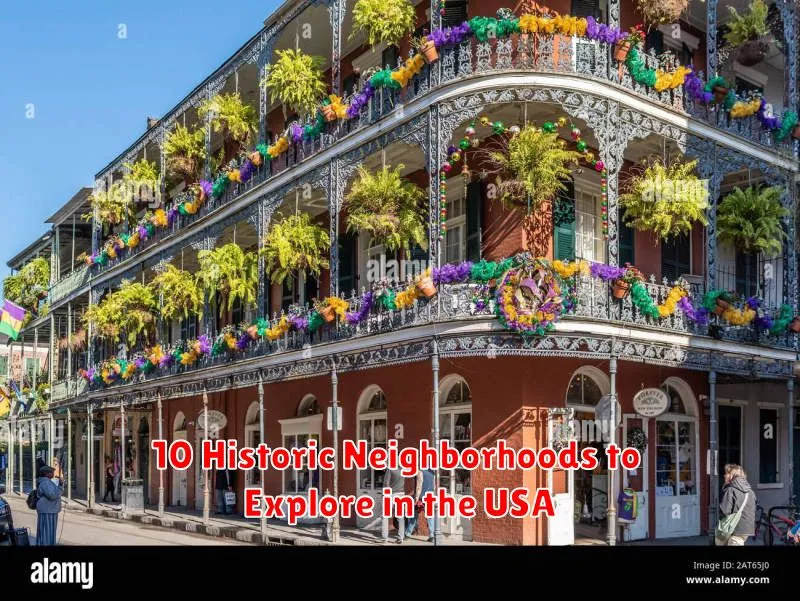Embark on a captivating journey through time by exploring some of the most historic neighborhoods in the USA. These vibrant enclaves offer a glimpse into the nation’s rich past, showcasing preserved architecture, captivating stories, and a palpable sense of history. From cobblestone streets to grand mansions, each historic neighborhood presents a unique perspective on American heritage. Discover the cultural influences, architectural marvels, and significant events that have shaped these historic districts, providing an unforgettable experience for history buffs and curious travelers alike.
This carefully curated list of 10 must-see historic neighborhoods in the USA offers a diverse range of experiences. Whether you are fascinated by colonial-era charm, the grandeur of the Victorian period, or the industrial revolution’s impact on urban landscapes, there is a historic district waiting to be explored. Delve into the stories behind these fascinating neighborhoods and uncover the essence of American history, one cobblestone at a time. Prepare to be transported back in time as you wander through these historic gems, each with its own unique tale to tell.
French Quarter, New Orleans
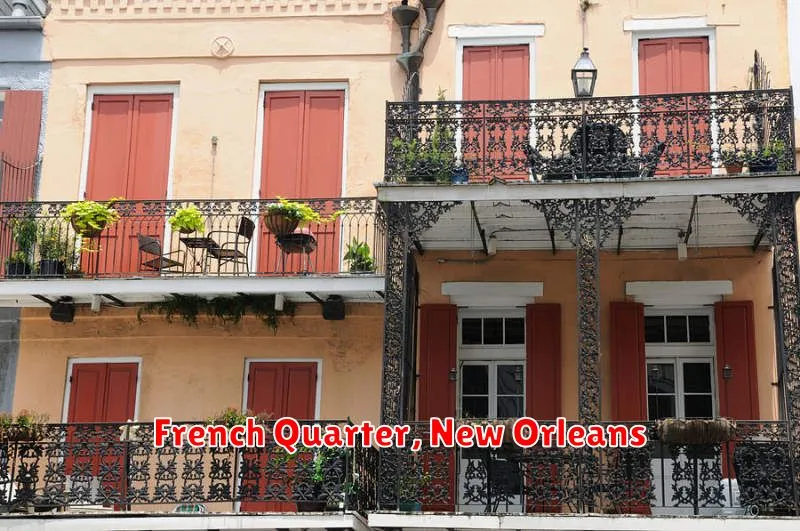
The French Quarter, also known as the Vieux Carré, is the oldest neighborhood in New Orleans. Founded in 1718 by Jean-Baptiste Le Moyne de Bienville, the area is known for its distinct architecture, a blend of French, Spanish, and Creole influences. Wrought-iron balconies, vibrant colors, and hidden courtyards contribute to its unique charm.
Beyond its aesthetic beauty, the French Quarter is a hub of cultural activity. Live music spills out from jazz clubs, street performers entertain crowds, and art galleries showcase local talent. From Jackson Square to Bourbon Street, the area pulsates with energy, offering an unforgettable experience for visitors.
Charleston Historic District, SC
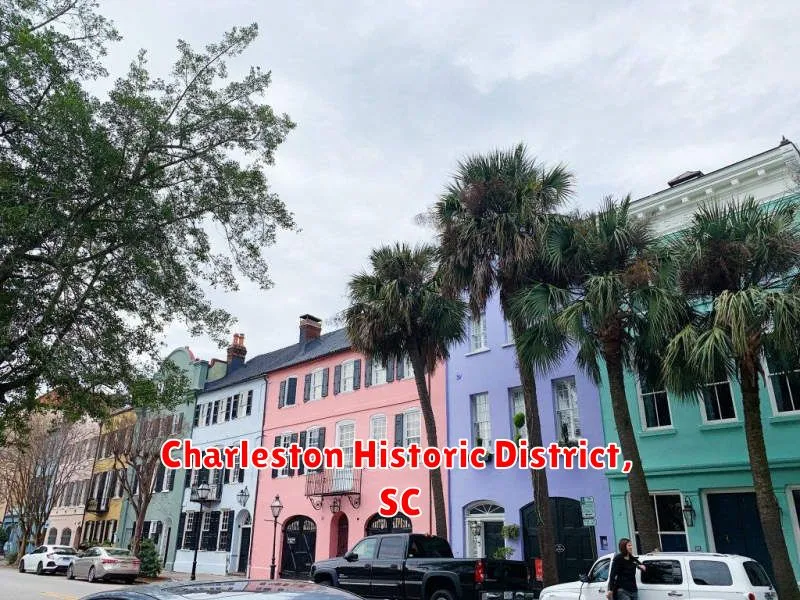
Charleston’s Historic District offers a captivating glimpse into America’s past. Established in 1670, it’s one of the oldest and most well-preserved historic districts in the nation.
Cobblestone streets, antebellum architecture, and lush gardens transport visitors to another era. Notable features include Rainbow Row, a series of thirteen colorful historic houses, and the historic Charleston City Market.
The district is also home to Fort Sumter, where the first shots of the Civil War were fired, highlighting Charleston’s pivotal role in American history.
Savannah Historic District, GA
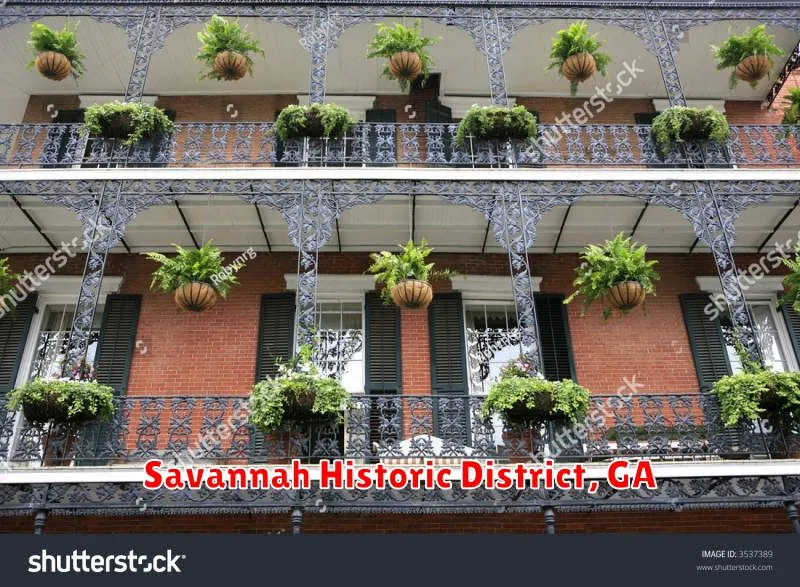
Designated a National Historic Landmark District, Savannah’s Historic District is renowned for its meticulously preserved architecture and rich history. Founded in 1723, it’s one of the largest National Historic Landmark Districts in the United States. Spanish moss drapes over ancient oak trees, creating an ethereal atmosphere as you stroll along the cobblestone streets.
The district boasts a remarkable collection of historic squares, each with its own unique character and charm. These squares, originally designed as public gathering spaces, now offer a peaceful respite from the city’s hustle and bustle. Antebellum architecture is prevalent throughout the district, showcasing a variety of styles including Federal, Greek Revival, and Victorian.
From the iconic Forsyth Park to the historic homes and churches, Savannah’s Historic District offers a glimpse into America’s past. Experiencing the district’s unique blend of history, architecture, and Southern hospitality is a journey not to be missed.
Beacon Hill, Boston
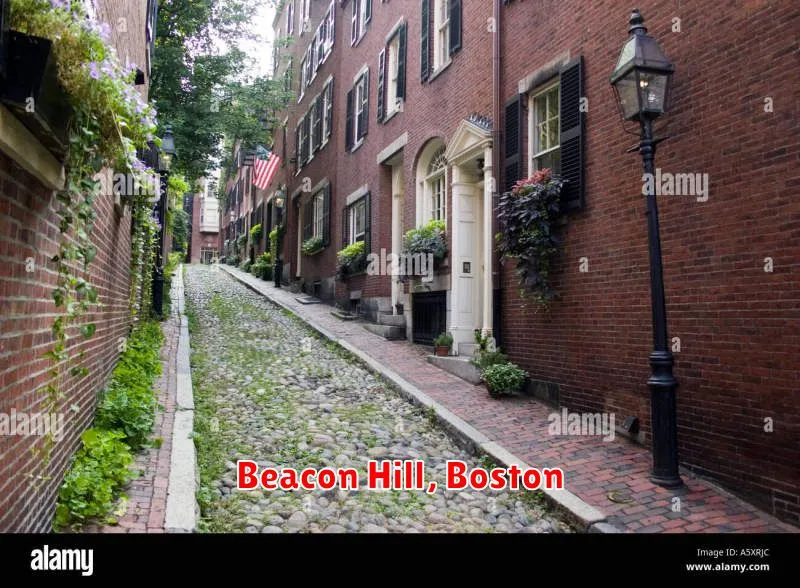
Beacon Hill, one of Boston’s most desirable neighborhoods, offers a glimpse into the city’s rich past. Characterized by its Federal-style architecture, gas-lit streets, and brick sidewalks, it exudes an undeniable charm.
Originally home to affluent Bostonians, the neighborhood retains an air of exclusivity. Wander along the narrow, winding streets and admire the meticulously preserved townhouses. Note the intricate details, like decorative ironwork and ornate doorways. Many of these homes date back to the late 18th and early 19th centuries.
Charles Street, the neighborhood’s main thoroughfare, is known for its antique shops, high-end boutiques, and charming restaurants. Explore Acorn Street, a picturesque cobblestone lane frequently photographed for its quintessential Bostonian ambiance.
Old Town Alexandria, Virginia

Founded in 1749, Old Town Alexandria boasts a rich history intertwined with the nation’s founding. Its cobblestone streets and historic architecture transport visitors back in time.
Explore Gadsby’s Tavern, frequented by George Washington, and stroll along the Alexandria waterfront, once a bustling port. The Torpedo Factory Art Center offers a glimpse into the area’s more recent past, having been converted from a munitions plant into a vibrant arts space.
Georgetown, Washington D.C.
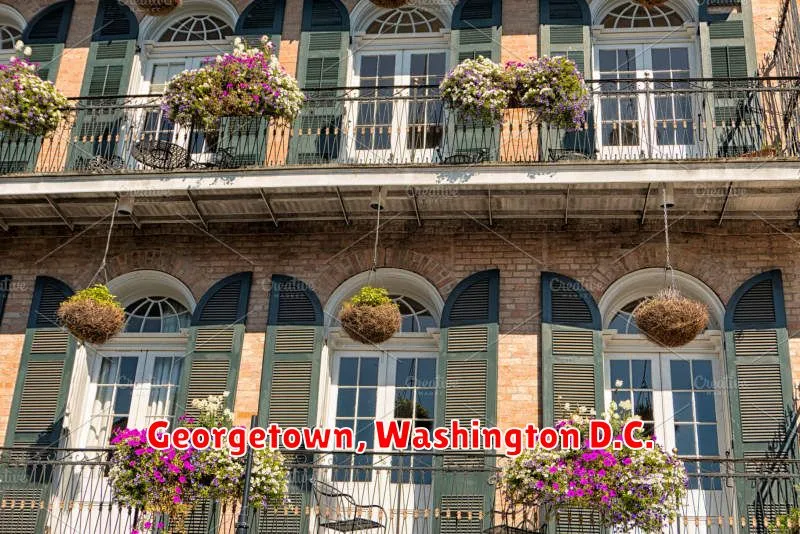
Established in 1751, Georgetown predates the founding of Washington, D.C. itself. This historic neighborhood, situated along the Potomac River, boasts charming cobblestone streets and Federal-period architecture.
Key features of Georgetown include its upscale shops and boutiques, vibrant dining scene, and historic waterfront. The Chesapeake & Ohio Canal towpath offers scenic walks and glimpses into the area’s past.
Don’t miss exploring Georgetown University, one of the nation’s oldest universities, and Dumbarton Oaks Museum & Garden, a beautiful Byzantine and pre-Columbian art collection housed in a historic estate.
Old City, Philadelphia
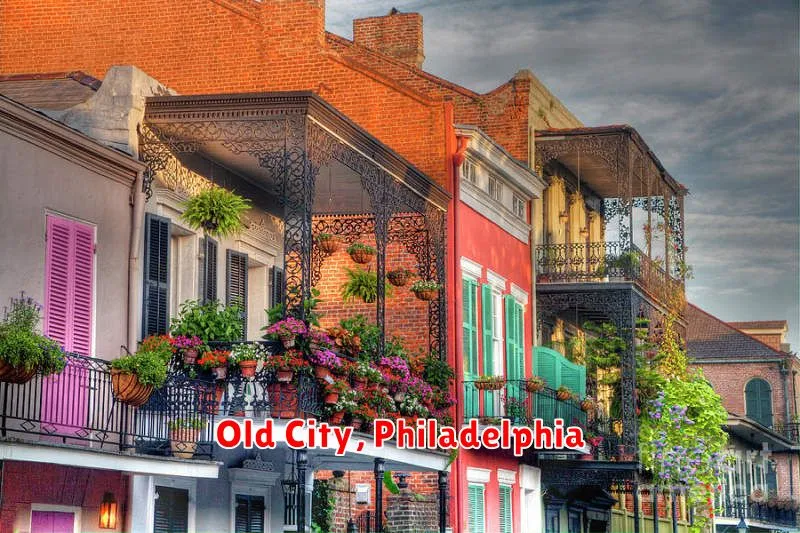
Old City holds the distinction of being the birthplace of the United States. This historic district is where the Declaration of Independence was signed and the Constitution was drafted.
Visitors can explore Independence National Historical Park, home to iconic landmarks like Independence Hall and the Liberty Bell.
Beyond its historical significance, Old City offers a vibrant blend of cobblestone streets, art galleries, trendy restaurants, and unique boutiques. It’s a must-visit for history buffs and those seeking a charming urban experience.
Capitol Hill, Denver
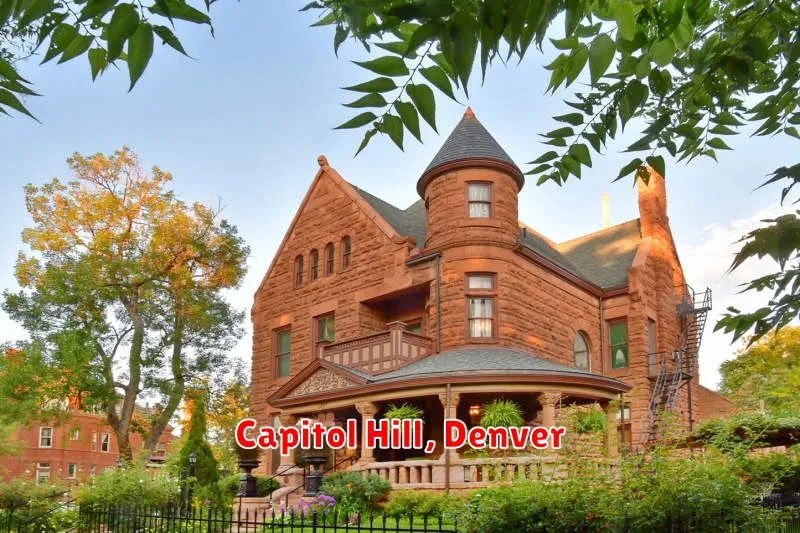
Capitol Hill, located in Denver, Colorado, stands as a testament to the city’s rich past. Established in the late 19th century, this neighborhood boasts a striking collection of Victorian and Edwardian architecture. Its namesake, the Colorado State Capitol, with its gold-domed roof, serves as a prominent landmark.
Beyond its architectural allure, Capitol Hill offers a vibrant cultural scene. The area is known for its historic mansions, many of which have been converted into museums, art galleries, and boutique shops. This blend of history and modern life creates a unique atmosphere, making Capitol Hill a must-visit for those exploring Denver’s historical tapestry.
Haight-Ashbury, San Francisco
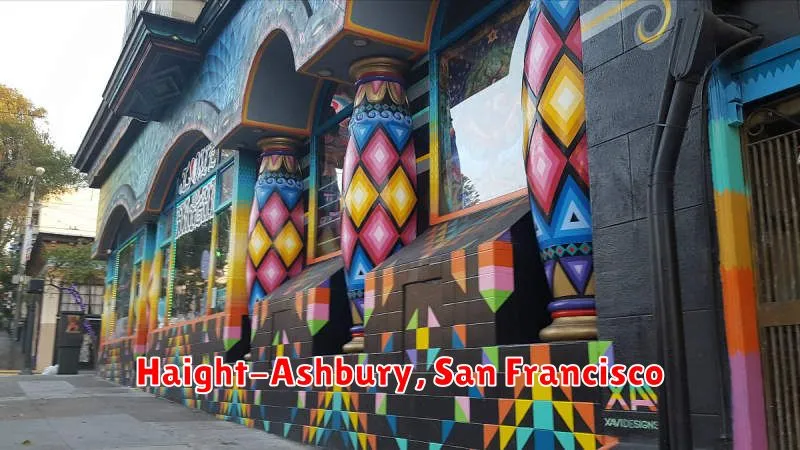
Haight-Ashbury stands as a cornerstone of American counter-culture. This San Francisco neighborhood became the epicenter of the hippie movement in the 1960s.
Known for its Victorian architecture, the area attracted artists, musicians, and writers, fostering a unique atmosphere of social experimentation. The “Summer of Love” in 1967 cemented Haight-Ashbury’s place in history, drawing thousands of young people seeking an alternative lifestyle.
Today, while the vibrant energy of the 60s has mellowed, Haight-Ashbury retains its bohemian spirit. It offers a glimpse into a pivotal era, with vintage shops, independent bookstores, and iconic music venues still echoing the neighborhood’s rich past.
Fremont, Seattle
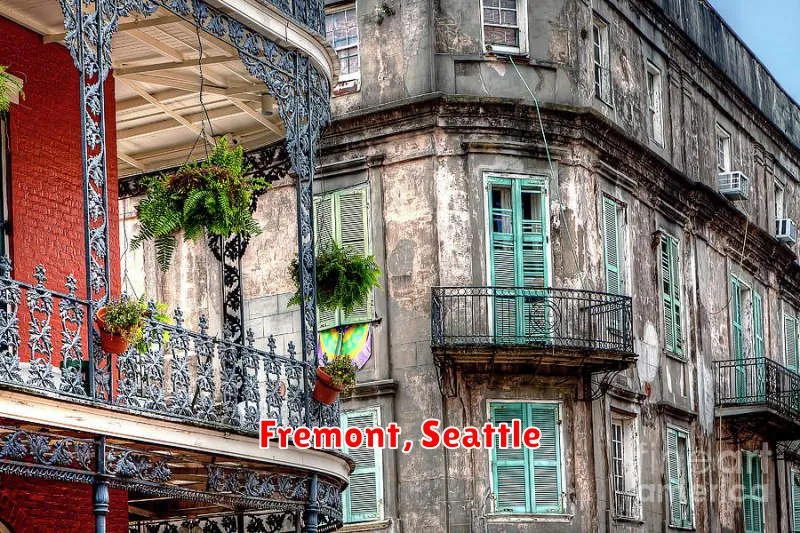
Nestled along the shores of Lake Washington, Fremont offers a unique blend of history, art, and quirky charm. Once a separate city, it was annexed by Seattle in 1891. Its industrial past is still visible in its architecture, repurposed factories now housing trendy businesses and residences.
A key attraction is the Fremont Troll, a massive public sculpture lurking beneath the Aurora Bridge. The area is also known for its vibrant arts scene, with numerous galleries and studios showcasing local talent. The annual Fremont Solstice Parade, a celebration of summer, adds to the neighborhood’s eccentric spirit.

